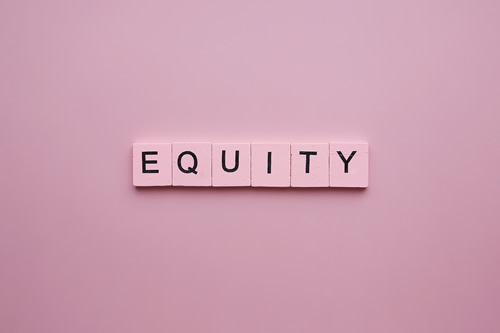As I meet with team leaders in my suburban Chicago school district, I ask: What is your department doing to create equitable and inclusive learning conditions for all of our students?
It’s a complicated question in the age of COVID-19. As we discovered in the spring, some families still lack the devices or broadband connectivity they need for remote learning, despite mobile computing being a ubiquitous facet of our lives. That sad reality had school districts scrambling to provide devices and broadband access to students when the pandemic originally closed schools.
But as educators know well, access to technology alone doesn’t create educational equity–a theory proven by recent testing data: Across the country, nearly one-third of students returned to school in the fall below grade level in reading and math despite the widespread use of education technology by districts in the spring. Edtech can’t prevent a student’s race or socioeconomic status from contributing to his or her academic success. And it certainly doesn’t guarantee high-quality learning experiences.
That brings me back to my original question to departmental leaders: How are you ensuring that all of our students have an equal chance for success? More specifically for the instructional technology team: Are we making wise investments in the thousands of edtech tools our teachers use? Are those investments getting students closer to our equity goals?
Thankfully, we don’t have to guess. Answers lie in the data. Through strong rapid-cycle analytics provided by LearnPlatform, we’re able to understand not only how often our schools use various tools and technologies, but whether our kids have impactful experiences with them–and, most importantly, whether the outcomes serve our broader mission of equity.
The first step is making sure our existing edtech resources align with our district’s teaching/learning goals. The instructional technology team doesn’t simply vet edtech for interoperability, data privacy, functionality, and other technical alignments; it also considers pedagogy. Team members evaluate whether students and teachers are using a product at the level they expected, then follow up with questions that tell us why. They break down usage rates by ethnicity and other demographic characteristics, then analyze whether the product is having an impact on educational outcomes. They investigate which tools are working best for which type of students, then determine if teachers simply need more training — or if the district should stop using the tool altogether.
In other words, we let quantitative data and qualitative observations from teachers combine to tell us a story of how our tech products impact academic performance and equity goals. From an equity standpoint, it’s important to not simply rely on measures like student growth and percentile rankings across different student groups, but to evaluate what students have learned — and what they have yet to learn in reference to a grade-level standard — then turn that information into something teachers can use in the classroom. That equips our district to ensure we give students access to grade-level conversations, grade-level content, and grade-level work that engages them and improves outcomes.
Take, for example, our experience with Lexia Core 5, a literacy curriculum for students in grades K through 5. During a district-wide IMPACT analysis of the product, we learned that many of our students were doing better on assessments and school scores when they used Lexia about 50 percent less than its maker recommends. That prompted a series of even deeper dives into the data: Which schools use it? What grade levels? We analyzed the data by different categories — by school, by socioeconomic level, by race.
Then we investigated the classroom practices our teachers used along with Lexia. We found that depending on the grade level and the school, the product worked best as a supplement to regular classroom instruction rather than a replacement for it. That allowed us to make direct, instructional interventions to help all of our teachers deploy Lexia in the most effective way possible.
There is no single silver bullet for equitable teaching and learning. It’s a process, one that must be carried out diligently and systematically to improve both our educational practices and the tools we use. This means digging in to reflect on which interventions or methods are working best; how tools are used and how often; and where those combine to have the best impacts.
Given the national trends, increasing equitable engagement and learning is a challenge most districts must address. When administrators are able to provide actionable analysis and equip teachers to reflect together, with a commitment to continuous improvement, engagement and learning will improve.
- High school students say AI will change the workforce - April 18, 2024
- Motivating students using the Self-Determination Theory - April 17, 2024
- Michigan Virtual’s statewide workgroup releasing AI guidance for K-12 educators - April 17, 2024

